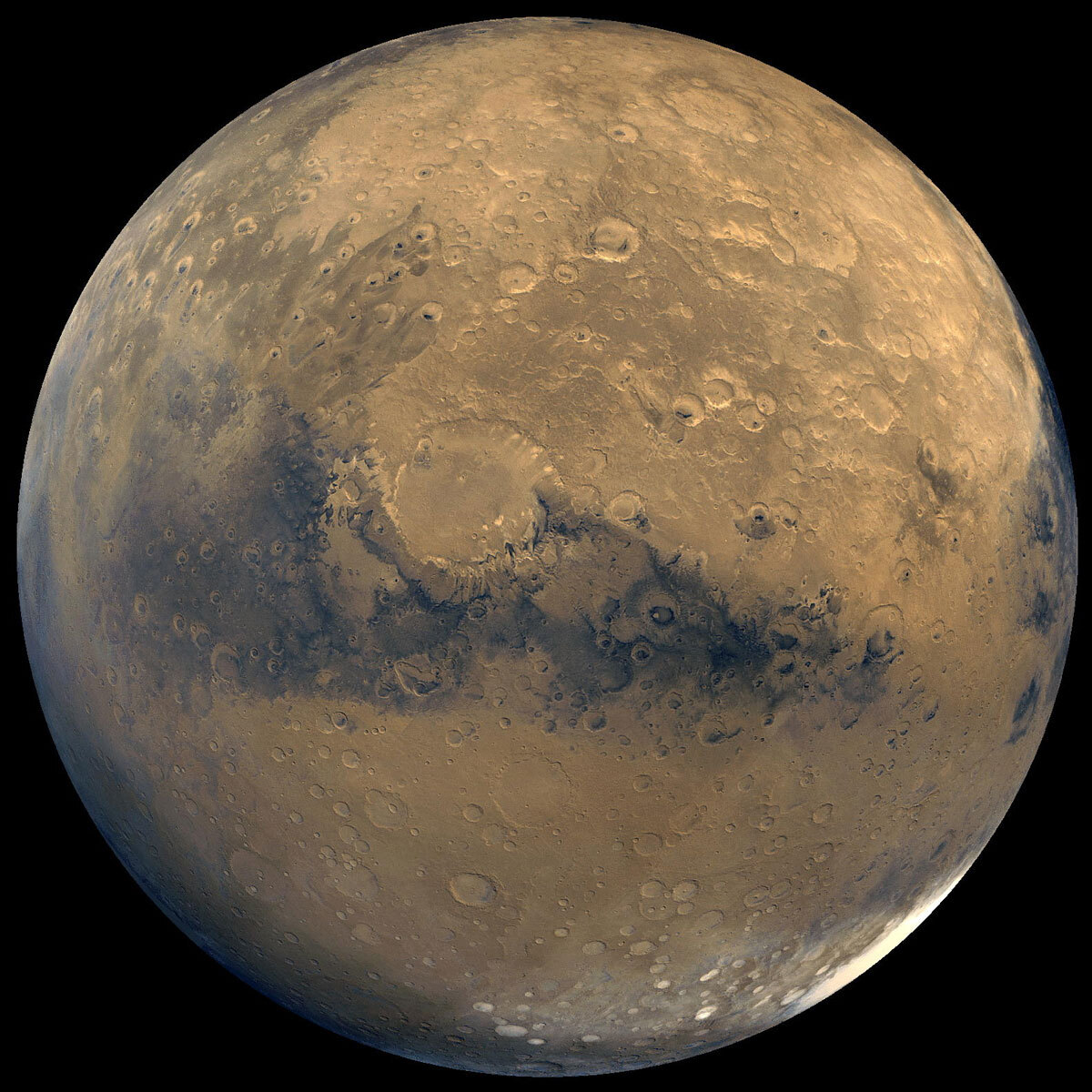
The new scientific results indicate that a large amount of the Red Planet’s water is trapped in the crust instead of escaping into space.
Billions of years ago, according to geological evidence, abundant water flowed over Mars and accumulated in pools, lakes, and deep oceans. New NASA-funded research shows that a significant amount of its water – between 30 and 99% – is trapped in minerals in the Earth’s crust, calling into question the current theory that the water escapes into space due to the Red Planet’s low gravity .
Early Mars was thought to have enough water to cover the entire planet in an ocean about 100 to 1,500 meters (330 to 4,920 feet) deep – a volume roughly equal to half of Earth’s Atlantic Ocean. While some of this water has unmistakably disappeared from Mars via atmospheric escape, the new findings, published in the latest issue of Science, conclude that it does not explain most of the water loss.
The results were presented at the 52nd Lunar and Planetary Science Conference (LPSC) by lead author and Caltech Ph.D. candidate Eva Scheller along with co-authors Bethany Ehlmann, professor of planetary science at Caltech and deputy director of the Keck Institute for Space Studies; Yuk Yung, professor of planetary science at Caltech and senior researcher at NASA’s Jet Propulsion Laboratory; Danica Adams, graduate student at Caltech; and Renyu Hu, JPL research scientist.
“Atmospheric escape does not fully explain the data we have on how much water once existed on Mars,” said Scheller.
Using a wealth of cross-mission data archived in NASA’s Planetary Data System (PDS), the research team integrated data from multiple NASA Mars Exploration Program missions and meteorite lab work. Specifically, the team studied the amount of water on the Red Planet in all its forms (vapor, liquid and ice) and the chemical composition of the planet’s current atmosphere and crust, looking in particular at the ratio of deuterium to hydrogen (D / H).
Although water is made up of hydrogen and oxygen, not all hydrogen atoms are created equal. The vast majority of hydrogen atoms have only one proton in the nucleus, while a tiny fraction (about 0.02%) exists as deuterium, or so-called “heavy” hydrogen, which has a proton and a neutron. The lighter hydrogen escapes the planet’s gravity much more easily than its denser counterpart. As a result, the loss of a planet’s water through the upper atmosphere would leave a revealing sign about the ratio of deuterium to hydrogen in the planet’s atmosphere: a very large amount of deuterium would be left behind.
However, the loss of water solely through the atmosphere cannot explain both the observed deuterium-to-hydrogen signal in the atmosphere of Mars and large amounts of water in the past. Instead, the study proposes that a combination of two mechanisms – the retention of water in minerals in the Earth’s crust and the loss of water to the atmosphere – could explain the perceived signal from deuterium to hydrogen in the atmosphere of Mars.
When water interacts with rock, chemical weathering forms clay and other water-bearing minerals that contain water as part of their mineral structure. This process takes place on both Earth and Mars. On Earth, the old crust constantly melts in the mantle and forms a new crust at plate boundaries, recycling water and other molecules back into the atmosphere via volcanism. However, Mars has no tectonic plates, so the surface ‘drying’ is permanent.
“The hydrated materials on our own planet are continuously recycled through plate tectonics,” said Michael Meyer, chief scientist for NASA’s Mars Exploration Program at the agency’s headquarters in Washington. “Because we have measurements from multiple spacecraft, we can see that Mars does not recycle, so water is now trapped in the crust or lost in space.”
A major goal of NASA’s Mars 2020 Perseverance rover mission on Mars is astrobiology, including looking for signs of ancient microbial life. The rover will characterize the planet’s past geology and climate, pave the way for human exploration of the Red Planet and be the first mission to collect and store Martian rock and regolith (broken rock and dust). Scheller and Ehlmann will assist in operations of the Perseverance rover to collect these samples that will be returned to Earth via the Mars Sample Return program, enabling the long-awaited further investigation of these hypotheses about the drivers of climate change on Mars. will make. Understanding the evolution of the Martian environment is an important context for understanding the results of analyzes of the returned samples and for understanding how habitability on rocky planets changes over time.
The research and findings outlined in the paper highlight the important contributions of early career scientists in increasing our understanding of the solar system. Likewise, the research, which relied on data from meteorites, telescopes, satellite observations, and samples analyzed by rovers on Mars, illustrates the importance of having multiple ways to investigate the Red Planet.
This work was supported by a NASA Habitable Worlds award, a NASA Earth and Space Science Fellowship (NESSF) award, and a NASA Future Investigator in NASA Earth and Space Science and Technology (FINESST) award.
News Media Contacts
Gray Gravestone / Alana Johnson
NASA headquarters, Washington
202-358-0668 / 202-358-1501
[email protected] / [email protected]
Andrew Good
Jet Propulsion Laboratory, Pasadena, California.
818-393-2433
[email protected]